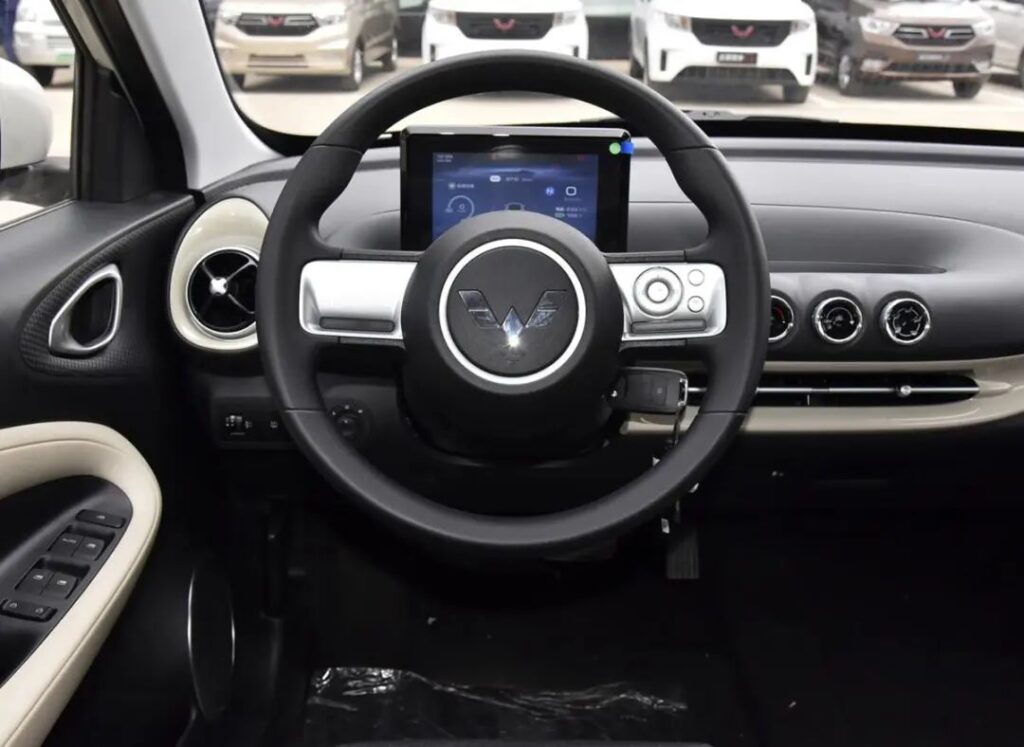The Wuling Bingguo has recently gained significant popularity, with its presence felt across various social media platforms and by influential bloggers. Its starting price of 59,800 yuan suggests that it has the potential to become the next hit model for Wuling Motors. However, despite its popularity, the reputation of the Wuling Bingguo seems to be polarizing. Positive reviews often praise its attractive appearance, spacious interior, and strong practicality. On the other hand, there are also numerous negative comments, with consumers complaining about its lackluster configuration, perceived tricks, and even the perception that the Wuling Bingguo is merely selling its exterior shell. After my test drive, I found that the car indeed has both distinct advantages and disadvantages. Let’s take a closer look at the pros and cons of the Wuling Bingguo.



Advantage 1: Wuling Bingguo features a retro design with high aesthetics, similar to Ora Cat’s retro design. Additionally, its interior design also resembles Ora Cat’s. However, the price of Bingguo is only about half of Ora Cat’s, making it a discounted version of Ora Cat. The high-aesthetic design of Bingguo is bound to capture the hearts of many young female car owners, just like Ora Cat, and Bingguo’s price is relatively affordable, giving it a price advantage.


Advantage 2: The interior space of Bingguo is well optimized, making it quite practical for family use.

Advantage 3: Wuling Hongguang MINI EV has established a strong market foundation for Wuling’s small electric vehicles. Chinese consumers tend to follow the herd mentality in their purchasing decisions, believing that if a brand is popular and widely purchased, it must be good. Therefore, Bingguo is expected to achieve significant sales success based on this consumer psychology.

Advantage 4: In the price range of 60,000 to 100,000 yuan, consumers have limited options for car models. Currently, the market only offers a few choices such as Nezha V, Leapmotor T03, and Geometry E. Therefore, it is difficult for Bingguo not to sell well in this competitive landscape.
After discussing the advantages, let’s talk about the disadvantages:
Disadvantage 1: The range is falsely advertised? It is not recommended to purchase the 203km range version.
Wuling Bingguo is equipped with a lithium iron phosphate battery pack from Guoxuan High-Tech, with power capacities of 17.3kWh/31.9kWh, corresponding to ranges of 203km/333km.

Interestingly, Leapmotor T03 also utilizes a lithium iron phosphate battery pack from Guoxuan High-Tech, identical in type and supplier to that of Wuling Bingguo. Here’s the key point: Leapmotor T03’s battery capacities are 21.6kWh, 31.9kWh, and 41.3kWh, corresponding to ranges of 200km, 310km, and 403km. Taking the entry-level models as an example, Wuling Bingguo has a battery capacity of 17.3kWh and a range of 203km, while Leapmotor T03 has a battery capacity of 21.6kWh and a range of 200km. Despite Leapmotor T03’s battery capacity being 20% larger than Wuling Bingguo’s, its range is still 3km shorter. Moreover, Leapmotor T03 is even smaller than Bingguo.

Moving on, let’s conduct another comparison.
The Panda MINI, with a guide price of 49,900 yuan, has a range of 200km and uses a 17kWh lithium iron phosphate battery from Guoxuan High-Tech as well. However, the Panda MINI is a mini electric vehicle with a length of around 3 meters and a curb weight of only 788kg. In contrast, the 65,800 yuan Bingguo has a curb weight of 1000kg and is nearly 1 meter longer than the Panda MINI. Given that Bingguo has a larger body, heavier weight, and the same battery capacity, type, and supplier, how does it achieve a range of 3km more? Everyone knows that electric vehicles’ range is not always accurate. If we consider battery preservation and low-temperature conditions, how far can the Wuling Bingguo with a 203km range actually travel?

Disadvantage 2: Lackluster Safety Configuration
From the configuration perspective, the two models of Wuling Bingguo, the 203km Light Enjoyment version (59,800 yuan) and the 333km Quick Enjoyment version (73,800 yuan), do not come equipped with airbags for the front passenger seat. Compared to its peers, the lack of safety features in Bingguo is quite serious. Even more concerning is that the entire lineup of Wuling Bingguo lacks ESP, which is already a mandatory standard in overseas markets. While ESP is not required to be equipped in the domestic market, it has become a “standard” for most automakers. What I find incomprehensible is that even the top-spec model at 83,800 yuan lacks ESP, which is unacceptable, considering that it’s a car priced around 90,000 yuan after all.
In conclusion:
It is undeniable that Wuling Bingguo does have advantages in terms of exterior design and interior space compared to its peers in the same price range. However, its battery range and safety configuration are the biggest drawbacks of this vehicle. While Wuling Bingguo is currently quite popular, whether it can maintain its popularity remains to be seen.




